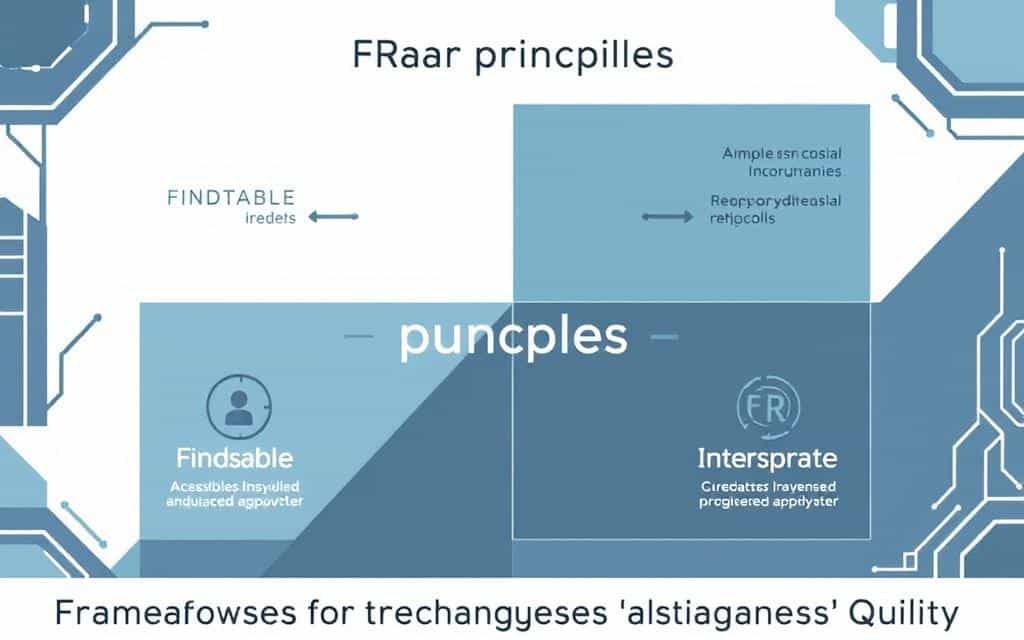Ever struggled to find the right data when you needed it? Poor metadata quality might be the culprit. Think of metadata as your organization’s data dictionary—it tells you what your information means, where it lives, and how to use it.
When metadata falls short, so does your decision-making. A staggering 68% of data projects fail due to unclear or missing details. But here’s the good news: improving your system’s structure isn’t just about compliance—it’s a competitive edge.
Frameworks like the FAIR principles (Findable, Accessible, Interoperable, Reusable) and the Metadata Quality Maturity Model (MQMM) help teams standardize their approach. Whether you’re in IT, marketing, or operations, better metadata means faster insights and fewer headaches.
Why Metadata Quality Matters
What if missing details in your records cost your company six figures last year? Invisible until something breaks, poor descriptions of your data create chaos—from rejected insurance claims to duplicated research. When labels are wrong or fields sit empty, teams waste time guessing instead of acting.
The domino effect of bad data descriptions
A hospital mislabeled patient birthdates as “date of service.” Result? Thousands of insurance claims bounced. Similar errors doomed NASA’s $125M Mars Climate Orbiter—one team used metric units, another used imperial.
Even small mistakes snowball:
- Marketing: A team duplicated $250K in research because sources weren’t documented.
- Retail: Inventory accuracy jumped from 72% to 94% after fixing product metadata.
- Finance: Proper PII tagging helped a bank dodge a $2M GDPR fine.
How good metadata boosts efficiency
Clear descriptions turn bottlenecks into shortcuts. Environmental scientists saved 11 hours weekly by tagging groundwater stations with FAIR-compliant details. Before? Their data scored 59/100 for findability.
Other wins:
- New hires onboard in 3 days instead of 6 weeks.
- Analysts reclaim 23% of their time spent verifying records.
- Factories cut machine downtime by 18% with real-time updates.
Better metadata isn’t just tidy—it’s a profit protector. Every blank field or vague label chips away at your bottom line.
Key Dimensions of Metadata Quality
The difference between chaos and clarity starts with how you tag information. Strong standards turn messy records into reliable assets. Focus on these four pillars to build trust in your systems.

Accuracy: Does your description match reality?
Incorrect labels create compliance risks. A bank flagged 12,000 accounts when SocialSecurityNumber fields contained phone digits. Their fix? Triple-validation for:
- PII tagging (personal data markers)
- Domain classification (finance/HR/ops)
- Stewardship contacts (who maintains it)
Test it: Could someone rebuild your dashboard using only your field descriptions?
Completeness: No more guessing games
Empty fields cost a retailer 28% in misplaced inventory. After requiring these 9 elements, accuracy jumped:
- Creation date
- Data owner
- Update frequency
- Source system
Their “Q3_2023_EMEA_B2B_Sales” files now include inflation adjustments and currency codes.
Consistency: Speaking the same language
When hospital A uses ICD-10 codes and hospital B prefers SNOMED CT, patient transfers slow down. Standardize:
- Naming conventions (no “Sales_Data_Final_v2”)
- Formats (PROD-0123-AB vs SKU123)
- Definitions (“active customer” = 90-day vs 180-day)
Timeliness: Freshness matters
A factory cut downtime 18% by updating machine sensor details every 15 minutes. Compare that to typical quarterly updates. Dynamic beats preset when:
- Data changes frequently
- Decisions are time-sensitive
- Seasons affect patterns (holiday sales spikes)
Frameworks for Measuring Metadata Quality
A groundwater research team scored their system 59/100—here’s what they fixed to hit 90. Picking the right evaluation method isn’t just about scores. It’s about aligning with your goals, whether that’s compliance, speed, or cost savings.
The FAIR Principles: Findable, Accessible, Interoperable, Reusable
FAIR’s 100-point scale forces you to ask tough questions. Could an outsider reuse your data without calling you? That groundwater team failed on “Findable” because station locations lacked GPS tags.
- Quick wins: Add creation dates and contact emails to all files (boosts “Accessible” by 20 points).
- Long-term: Map fields to industry standards like ISO 8601 for dates.

Metadata Quality Maturity Model: From Chaos to AI
MQMM’s 5 levels show where you stand. Most start at L1 (chaotic, no standards). A university library jumped to L4 in 18 months by:
- Tagging 100% of records with ownership details
- Using AI to flag outdated descriptions weekly
Automated vs. Manual: When to Use Each
Tools like Apache Griffin scan 1M records for $0.27. But manual audits catch nuanced errors—like a hospital finding “D.O.B” and “Birthdate” in the same system.
- Hybrid tip: Run automated checks monthly, then validate 10% manually.
- Cost saver: Prioritize high-risk areas (PII, financial data) for human review.
Putting Metadata Quality Into Practice
Ready to turn theory into action? Start with your most critical data fields—like SocialSecurityNumber or customer records—to see quick wins. A 30-day plan keeps efforts focused.
Tool stack: Open-source options like Apache Griffin work for small teams. Enterprise solutions scale for complex needs. Pick based on your data volume and budget.
Track progress with a simple dashboard. Monitor completeness (empty fields), accuracy (error rates), and update frequency. Teams using these metrics cut correction time by 40%.
Schedule daily checks for high-risk data, weekly reviews for operational files, and full audits quarterly. Training helps—new hires need modules on tagging standards and stewardship.
See the impact? Use an ROI calculator to estimate savings. Then explore data catalog demos to automate more. Better systems start with your next step.